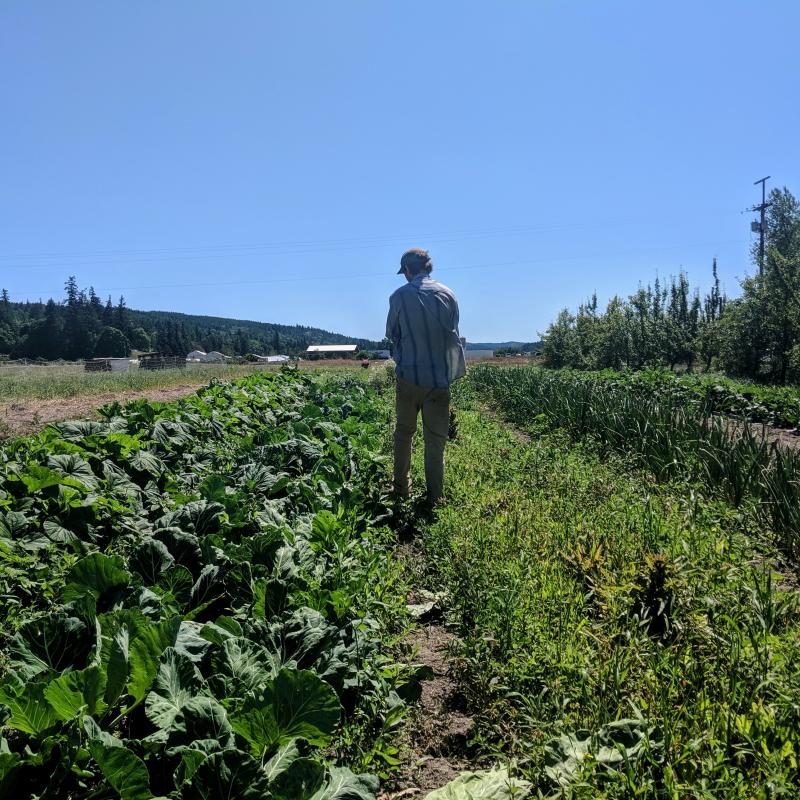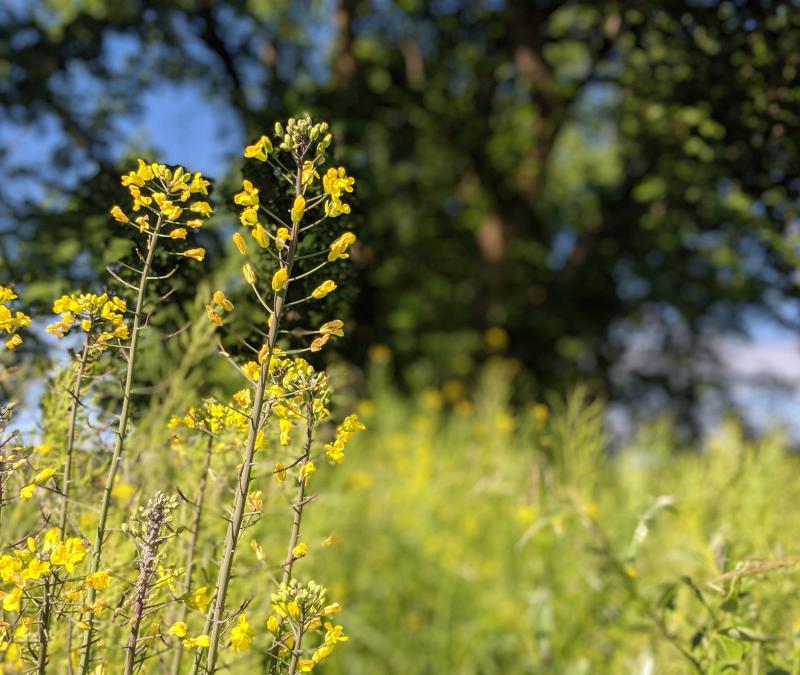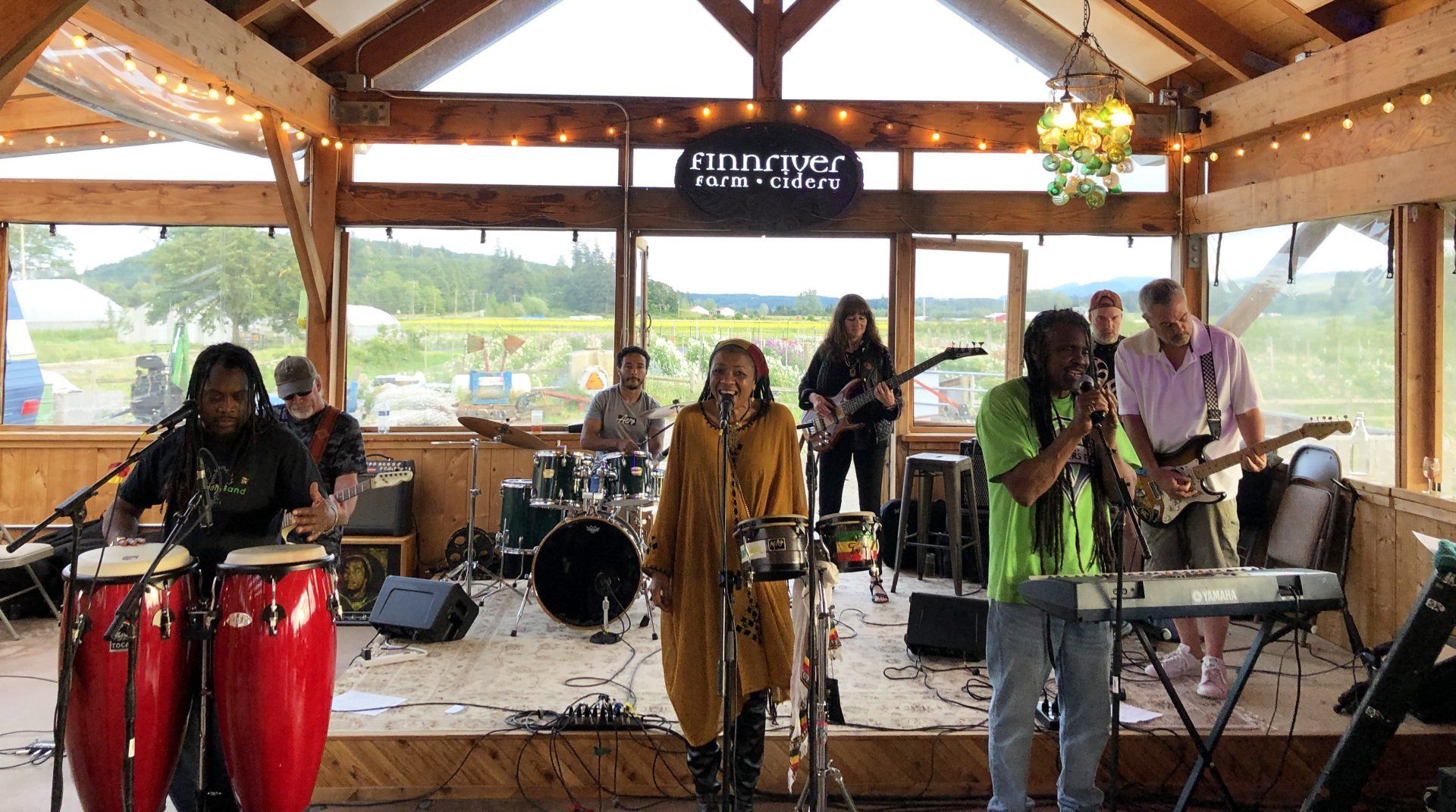Content Warning:As settlers and farmers who now grow apples on Native lands, we feel compelled to understand the history of the apple in this country, with special care for and attention to the suppressed story of Indigenous orchards and their vital influence on America’s relationship with this fruit. Our eyes were opened by the bookThe Ghost Orchard, the Hidden History of the Apple in North America by Helen Humphreys, which reveals critical elements in the origin story of apples related to Native communities and the North American landscape. We are sharing some of what we have learned here about Indigenous orchards with a content warning and a sense of grief that the story attached involves references to the brutality and traumatic history of Native genocide.
Most of us have heard the fabled tales of Johnny Appleseed and all the wild apple seeds he planted and then sold to settlers moving westward on the colonial frontier; but far fewer know about the role that Native nations had with the spread and story of the apple.
When Europeans arrived on the East coast of what became America, they brought many things from their countries of origin, including apple seeds and apple saplings. They planted them in the lands they stole through violence from the hundreds of different Native Nations living there, and soon after apple orchards became a common sight throughout the region. But it wasn’t just white settlers who were planting them. Many tribes, like the Oneida around the Great Lakes, the Algonquians up in present day Canada, the Shawnee in Missouri and Cherokee in Arkansas also planted, cultivated and propagated these new European apples in land surrounding their villages. Under their care the fruit flourished, and Indigenous orchards grew in size and popularity. Small, bitter crabapples were the only apples native to North America and these new varieties far outstripped crabapples in size, texture and flavor. The cultivated apple became a large part of a number of tribes’ diet year round, either cooked, dried, stored, fresh or pressed. Some varieties from the Indigenous orchards even became so well known they were grown commercially and their descendants exist in our markets today.
The value these Indigenous apple orchards added to the land that the tribes were living on did not go unnoticed by the settlers or their fledgling government’s leaders. It was not too long before tribal communities with apple orchards were targeted specifically in campaigns to harass, intimidate or forcibly remove them from their land so that European settlements could build on top of them and appropriate their land’s bounty. And as colonization accelerated, these orchards became a symbol of Indigenous prosperity to be destroyed by the growing military force. According to Humphreys, "The apple thus became, in its infancy in North America, a tool for colonialism.”
In 1779, the soon-to-be first President General George Washington, sent four thousand men to battle the Six Nations of the Iroquois or Haudenosaunee Confederacy which included the Oneida, Onondaga, Mohawk, Cayuga, Seneca and Tuscarora Nations. His goal was to determine “at a single blow, whether white men or red men should hold domination over these fertile vales and along these streams, and over these lakes and mountains.” [Source: Fredrick Cook. Journals of the Military Expedition of Major General John Sullivan Against the Six Nations of Indians in 1779] The invading soldiers marched through the area of upstate New York and around the Finger Lakes, decimating over 40 villages and cutting down or setting fire to the orchards they encountered along the way. The residents of the villages who had warning escaped, but had few safe places to turn. Some were given refuge by the British soldiers who they had fought alongside during battles of the Revolutionary War. But the British forts did not have enough room to house or food to feed so many, and hundreds of Native families died.
Even with so many powerful forces working to eliminate or assimilate them, Native nations and tribal cultures endured and continue to practice and restore traditional foodways. One such example is theOneida Nation of Wisconsin who were forced to relocate from their traditional home in New York State and lost thousands and thousands of acres of their land. In recent decades, they have purchased 30 acres of orchards in their original homeland and planted fruits, berries and vegetables as part of theirCommunity Integrated Food Systems project to provide traditional foods and agricultural jobs to tribal members. They also started an annualBig Apple Fest which brings the community together along with the greater public to celebrate Oneida culture, traditions, food and apples every fall.
“In school, all of us were taught the same thing - that Columbus was a great explorer who “discovered America.” As a kid, I didn’t realize he was actually lost, which eventually lead to the European’s attempt to colonize our ancestors. What they didn’t count on, is our strong warrior spirit, which sustains us to this day.” -President of the Seneca Nation Rickey L. Armstrong, 2020
Here on the Olympic Peninsula, the JamestownS’Klallam Tribe Traditional Foods & Culture Program “Emphasizes that humans are integral to, rather than separate from the natural world, that a relationship between these landscapes require human involvement with them if they are to continue to exist.” And at Naiome Krienke’sChemakum Longhouse for the People project property in Quilcene, botanists from the Olympic Peninsula prairie restoration initiative are working to re-plant camas and other native plants.
There are many myths about the apple. Learning more about the Indigenous influence on the spread of apple varieties across the North American landscape brings complexity to the story for those who have not been exposed to it, and challenges the prevailing myths that obscure Indigenous realties and colonization's many brutalities. It also allows recognition and respect for the depth and resilience of place-based Indigenous cultures and their traditional ecological knowledge. Growing apples on the farm, making cider, inviting community together to share in the fruits of our farming and fermentation — all of that happens in the context of larger, longer layers of stories requiring acknowledgment and commitment to healing relationships.
Co-authored by local writer Kai Wallin & Finnriver founder Crystie Kisler
Finnriver Resources
Indigenous Land Acknowledgement
DEI Statement and Action and Accountability Plan
Article Sources
Humphreys, Helen.The Ghost Orchard: The Hidden History of the Apple in North America.HarperCollins Publisher. Toronto, Ontario, Canada, 2017.
OneidaBig Apple Fest
Further Reading
How Native Farmers Shaped the NW Apple Industry, Part 1: Orgins
How Native Farmers Shaped the NW Apple Industry, Part 2: Snake River and Yakama Valley
Confederated Tribes and Bands of the Yakama Nation
Jamestown Traditional Foods & Culture Program
A Curious Tale: The Apple in North America
Native American Food Sovereignty Alliance









